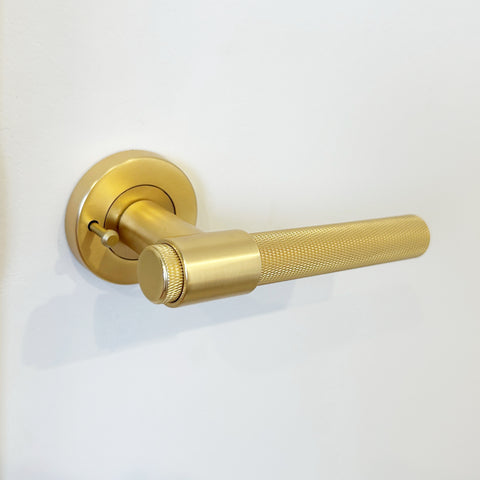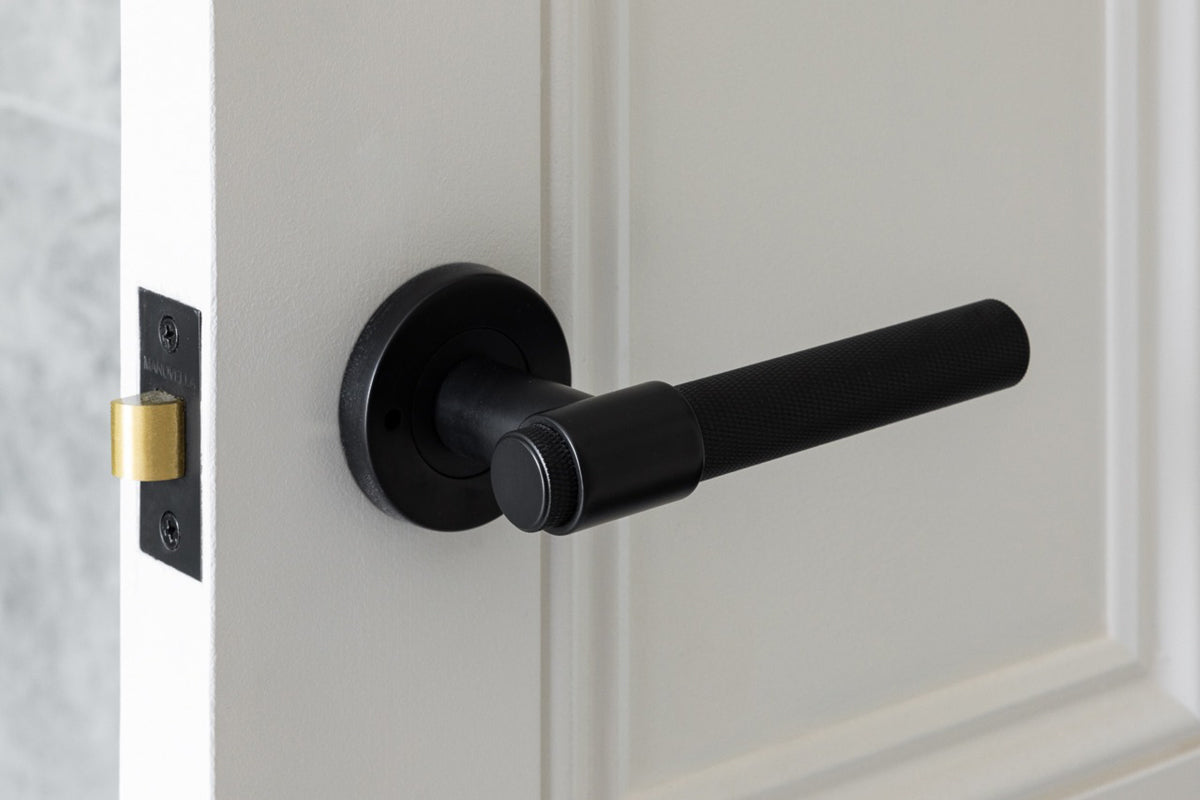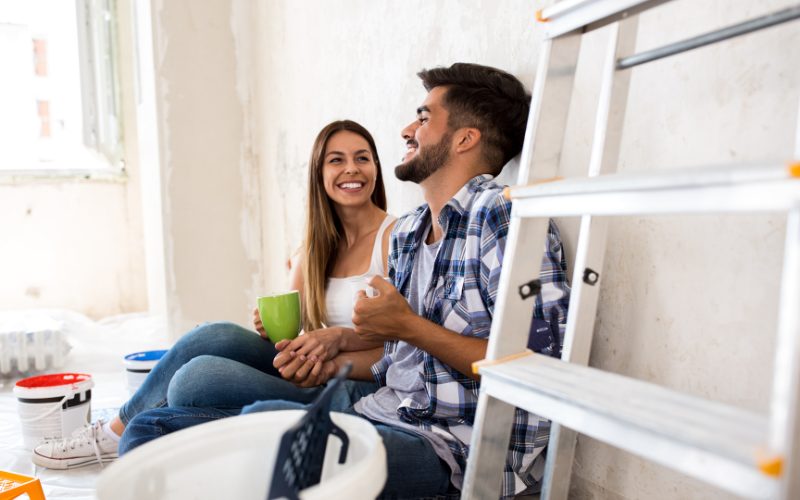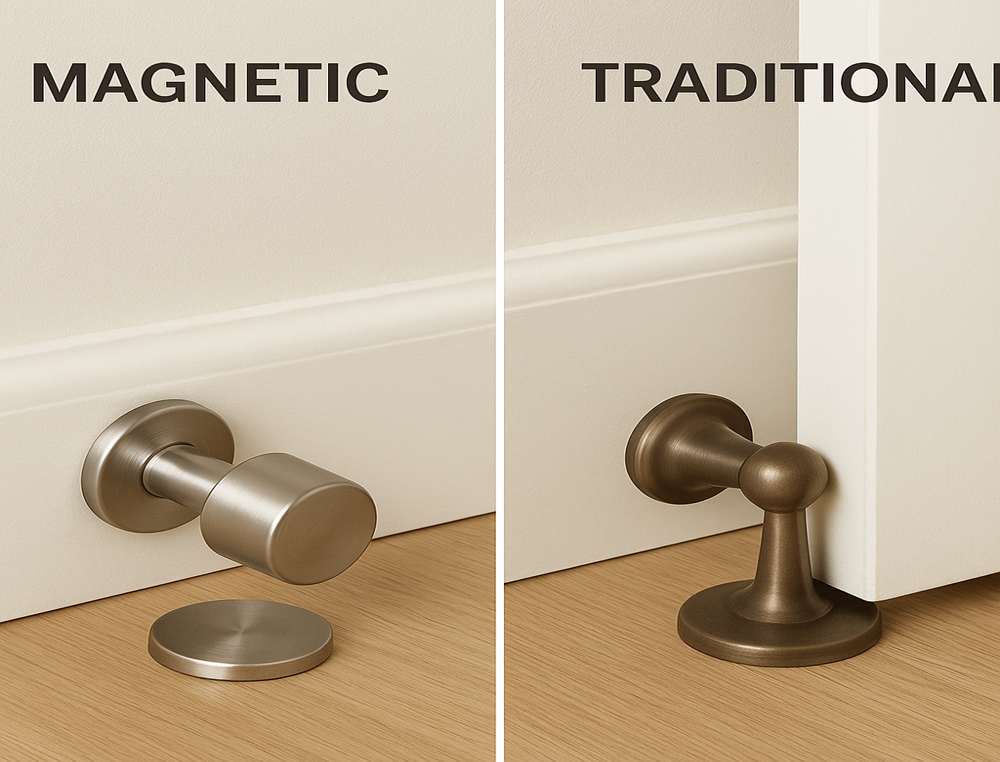Demystifying Door Hardware: A Guide for the Everyday Person
Have you ever been overwhelmed by the sheer amount of options when it comes to door hardware? From passage sets to entrance sets, deadbolts to deadlocks, the terminology alone can feel like a foreign language. Don't worry, with years in the locksmithing industry we’re pros at explaining some of the basics! This blog is here to break down all the essential terms and help you navigate the world of door hardware with confidence.
What is a Passage Set?
The everyday heroes of the door hardware world, passage sets are perfect for interior doors that require opening and closing frequently, like hallways, living rooms, and bedrooms. They typically consist of two levers or knobs, one for each side of the door, and a latch mechanism that allows the door to close securely without locking.

What is a Privacy Set?
Ideal for bathrooms and bedrooms, privacy door handles and sets offer an extra layer of control over who enters and exits. They function similarly to passage sets, but with a locking mechanism that can be activated from inside the room only. This provides additional privacy and when needed.
In Australia it is mandatory that all privacy sets have an ‘emergency entrance’ function, allowing anybody to unlock the door from the outside in an emergency i.e. child locked themselves in, or someone has fallen over inside.
This function is usually offered via an emergency hole in the rose of the handle, or via an external ‘coin slot’.
Privacy sets are NOT for security purposes and are not to be installed on exterior door.


What is an Entrance Set?
Standing guard at the front door, entrance sets are built for durability and security. They are the first level of security for your home. They incorporate features such as an external keyway, an internal locking snib or button, a security latch and a weather-resistant finish to protect your home from the elements. A good entrance set will not only offer a good level of security but also have an aesthetic that suits the home!

Deadbolts vs. Deadlocks.
While the terms are often used interchangeably, there is a subtle difference between deadbolts and deadlocks.
Deadbolts are locking mechanisms that operate independently of the door handle, and throw a bolt that locks the door into place. On the outside they have a keyway, and on the inside they can have either a turn-snib (single sided deadbolt) or a another keyway (double sided deadbolt).

Deadlocks are also operate independently of the door handle, but can either have a latch or a bolt that locks the door. They also have a external AND internal keyway. This means that when locked with a key, they must be opened with a key from either side. They are the perfect solution for when you go on holiday and nobody is home. If someone was to break in via a window, they still would not be able to unlock your front door and walk out with all your things!

Note that a lot of deadlocks don’t have to be ‘deadlocked’ in order to be secure.
Some deadlocks you can lock the door by either turning a knob or simply shutting the door, this means the user will always be able to exit freely without a key. It is VERY IMPORTANT to NEVER DEADLOCK your doors if somebody is still home.
In the event of a fire, it is imperative that all occupants can freely exit at all times without the need to search for a key.

The simple way of answering the question “Do I have a deadlock on my door?” is this:
If you can stick a key on the INSIDE of your lock, then yes – you have a deadlock.
Bonus Terminology!
Left/Right handed lever: When looking at the door, If the handle is on the left-hand side of the door, it’s a left-handed lever. If it’s installed on the right-hand side of the door, it’s a right handed lever.
Door Jamb: The frame that surrounds the door opening.
Strike Plate: A metal plate on the door jamb that the latch mechanism catches when the door is closed.
Door Closer: A mechanism that automatically closes the door after it is opened.
Door Seal: A brush or gasket mounted on the bottom of the door to seal the gap between the door and the floor, keeping out drafts and noise.
Escutcheon: A decorative plate that surrounds the keyhole on a door.
Rose/Rosette: A decorative plate surrounding the base of a door handle or knob.
Now that you have a basic understanding of door hardware terminology, you can confidently choose the right products for your home. Consider factors like function, security, style, and budget. Will you have kids or pets who may need access to specific areas? Do you need extra security for your front door? What kind of look are you trying to achieve? Answering these questions will help you narrow down your choices and find the perfect hardware for your doors.
Remember: Don't be afraid to ask for help! With over 30 years of locksmithing experience, the team at Manovella will be sure to find you the right solution for your home.
That’s it! You're now equipped to navigate the world of door hardware like a pro! So go forth and unlock the possibilities for your home!











